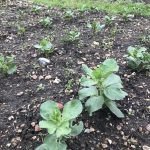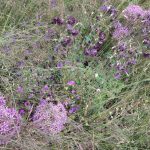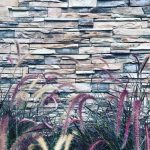The UK Government is planning to ban the sale of peat based composts to gardeners in England and Wales by 2024, and its use by businesses, such as for growing plants to sell, shortly after. Instead people will grow in peat free composts and homemade compost.
This follows a disastrous failure to move away from peat composts voluntarily, first requested in 2011 with a deadline of 2020. In that time some excellent peat free compost products have appeared on the market and prices have come down, many leading nurseries have already made the switch. Sales of peat free compost have risen to around a quarter of all compost bags sold at their highest before the pandemic. Most horticultural businesses, particularly the larger growers and sellers haven’t made the switch yet.
You may be wondering why all of this matters and why a ban is coming in the first place, if so, read on.
What is peat?
Peat is made up of dead plant material, largely spaghnum mosses and grasses, submerged in water.
Why is that important?
Over millennia, this build up of plant material has locked in huge amounts of carbon and created a unique habitat in which unique plants have evolved. There isn’t very much peat land in the world, just 3% of land on earth is considered peatland (Wildlife Trusts).
How does carbon locking work?
As plants grow, they shed dead leaves or die completely. This dead material builds up and largely consists of carbon, a material that forms one of the building blocks of most life on earth. In areas of land prone to waterlogging, this plant material is submerged in water, keeping it away from air, air of course contains a lot of oxygen. This slows the decomposition process, keeping the carbon locked in the submerged plant material, which we call peat. Over thousands of years you can imagine how much carbon is therefore locked in these soaking peatlands. When dug or drained, the peat that has formed over millennia is exposed to oxygen and oxidises, the carbon and oxygen combining to form CO2, the famous gas that is causing global warming. According to the Wildlife Trusts 3.2 billion tonnes of carbon is stored in UK peatlands alone. Keeping this plant matter in waterlogged peatlands will contribute greatly toward the UK’s emission reduction targets.
How much peat does the UK horticulture industry use?
Approximately 2.2 million cubic metres per year according to the Government (DEFRA, Department for Environment, Food and Rural Affairs).
Peat is an unsustainable resource
It takes one year to produce 1mm of peat, that’s one thousand years to build up one metre. This is not sustainable by any measure. As garden writer Beth writes here, this is not even close to replacing dug peat within our life time.
Habitat for endangered species
Although peatlands don’t sound particularly habitable, they are for many species that have either evolved in them or that find them as essential homes. Joshua Styles, an ecologist and peatland expert says, “we’ve lost >99% of our pristine raised bog which has put vast swathes of species that live on them on the red-list, many, like the English Sundew are teetering on the cusp of extinction.” Curlew birds are another species in danger of extinction due to habitat loss, protecting what’s left of peatlands will help protect them too.
Which nurseries are sell peat free plants?
Many leading growers have already made the switch, take a look at Nic Wilson’s peat free nurseries list.
Is peat free compost as good as peat compost?
Many gardeners and nurseries grow plants in only peat free compost, it works fine. There are lots of myths about peat free compost, such as “it doesn’t retain as much water as peat” or “it has less nutrients than peat” which are simply not true. I have explored this in detail in my peat free compost trials here. Peat is a naturally nutrient poor material, like many peat free composts, the nutrients are added by the manufacturers. Some peat free composts are good, some less so, but this is the same for peat, peat based composts have their good and bad brands.



